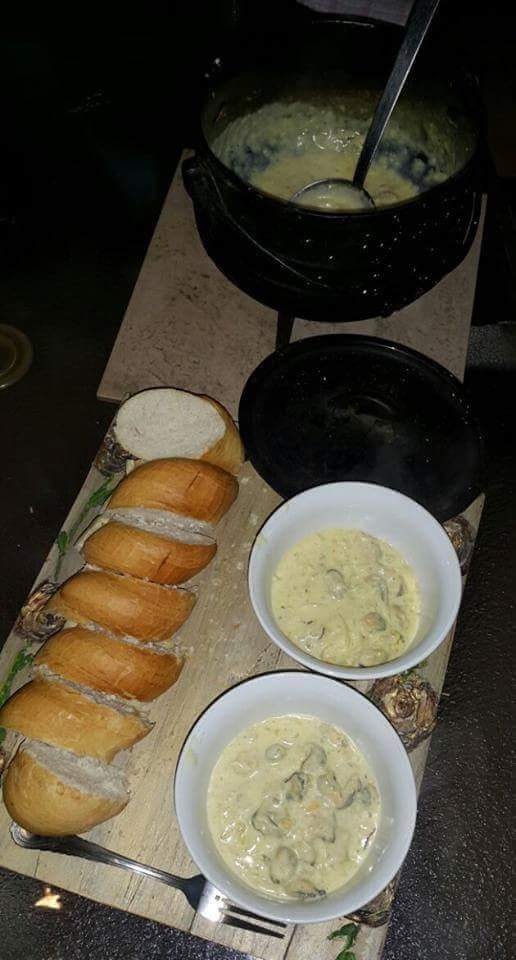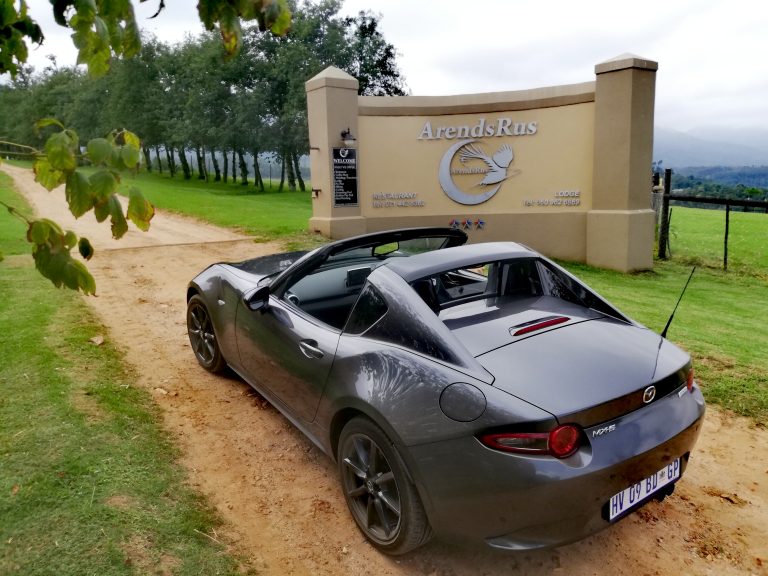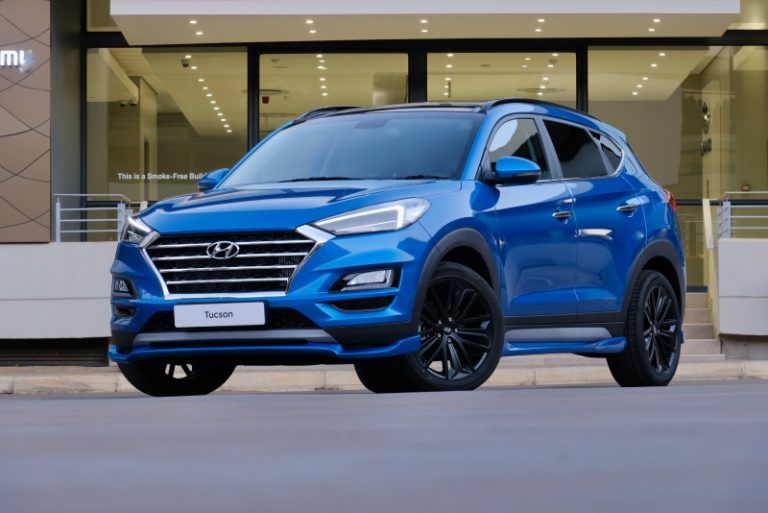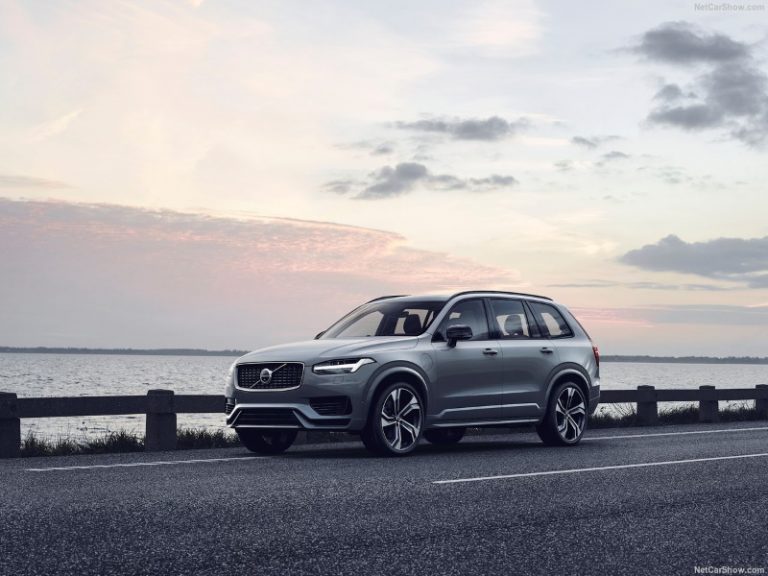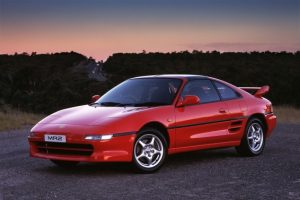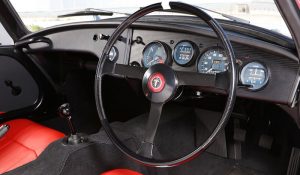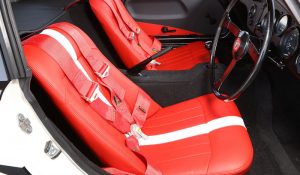
Tuisgemaakte Grenadella Likeur / Zoerdoef (3-dag proses)

Knoffel-Mossel Potjie

By waters waar rus is…










As jy moeg word vir die lewe in die stad…


KONFYT-STOOMPOEDING

Hyundai Tucson Sport
Two engine options with more power and unique body kit
If ever a brand stood out for representing the Korean commercial renaissance in the automotive world, it is Hyundai. Hyundai has pulled out the stops and offered passenger vehicles (and commercials too) that in perception and ownership terms have stood shoulder to shoulder with old-established rivals. In my view, the vehicle that really started the renaissance was the iX35, an SUV that brought a dash of style to the SUV segment and with it a level of desirability that most competitors at the time could not match.
Today, it is the Tucson (both the progenitor and successor to the iX35) that carries the flag for Hyundai in the mid-size SUV market. Pesky rivals such as the VW Tiguan and Toyota RAV4 are hard nuts to crack but that simply spurred Hyundai’s SA importers to add some fizz to the range as demonstrated a couple of years back by the introduction of the Hyundai Tucson Sport, a limited edition model unique to the local market and one endowed with lots of sporty accoutrements.
The Tucson model range as a whole underwent a significant makeover in 2018 and come mid-2019, Hyundai Automotive SA decided to introduce gen 2 Sport models based on the aforementioned upgraded model. The initial foray could truthfully be described as a “toe in the water” venture which has acted as a trailblazer for the two models recently presented to the press in the Western Cape.
Only the 1.6 Turbo petrol received the Sport makeover in 2017 but now, and how good this is to report, a Turbo D has also been added to the ranks. The former now delivers 150kW/300Nm fed to the front wheels via a massively improved 7-speed dual clutch gearbox with optional manual override while the D offers up 150kW and a stump-pulling 460Nm torque peak that makes its presence felt from just 1 750 rpm.
Again, the front wheels do all the work, but in this case, an 8-speed torque converter auto sees service, also with a manual override option. Both motors offer notable increases in grunt over the standard iterations thanks to some “after-market” software tweaking that’s aided and abetted by some massaging of throttle responsiveness.

Both models are based on the range-topping Elite derivative which telegraphs leather-clad seating and plenty of trinkets including Apple Car Play and Android Auto connectivity that allows for sat nav functionality via a mobile phone connection. Add in powered seats, dual climate control with rear feed, blind spot and cross-traffic alert, reverse camera and park sensors, electric windows and a large sunroof and you’ve got a very well-equipped SUV on your hands.
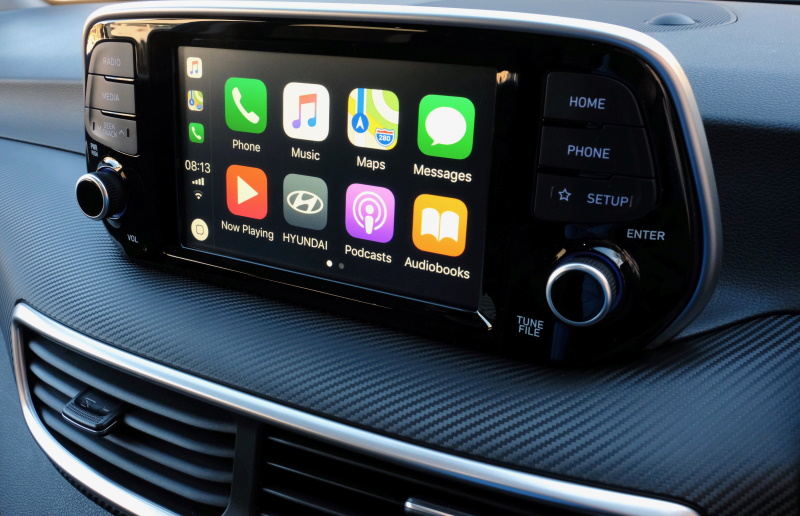
As is the norm in this neck of the woods, and de-rigeur when it comes to sportily-clad vehicles, the interior is all-black. At first glance, the cabin exudes an air of plushness which is founded upon the use of visually appealing materials, and in the case of the upper surfaces, materials that are soft to the touch.
It’s on the outside that the real differentiators are to be found. Most obvious are the unique-to-model black alloys that are home to 245/45R19 rubber followed by mean-looking quad exhaust outlets, prominent side skirts, front and rear spoilers and a faux rear diffuser. All this sporting kit is sourced from Korea and succeeds in telegraphing the model’s sporting overtones while just managing to avoid an over-dressed “Durban special” appearance.
We set out in a 1.6 turbo and it soon became apparent that the upgraded DCT transmission, complete with paddle shifters in this instance, has shrugged off the complaints of old and now delivers swift and smooth shifts with the bonus of excellent responsiveness thanks to the absence of slip. The meaty torque output also allows for higher gearing with reduced engine revs and lower mechanical noise levels.
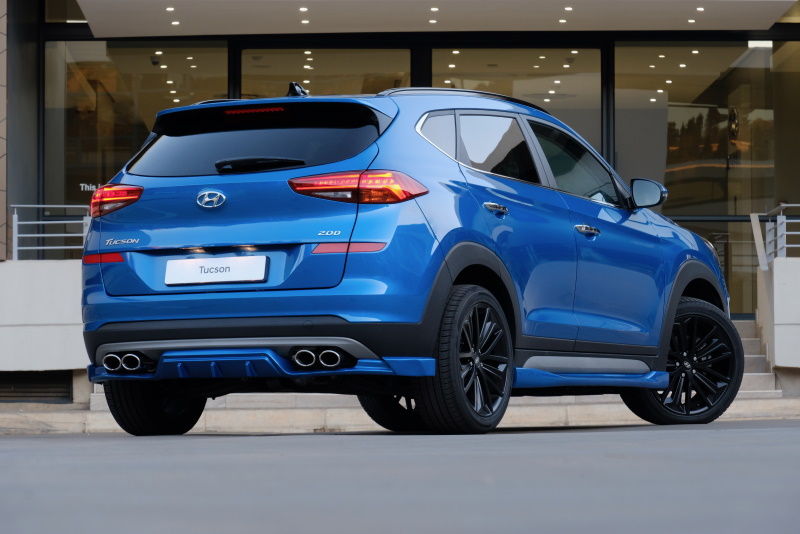
My first acquaintance with the 2.0 turbo D, complete with smooth-acting 8-speed torque converter gearbox, was on Killarney race circuit. To say the free-revving nature of the engine came as a surprise, as did the level of outright performance, is something of an understatement.
In a track environment, the slightly more immediate responses and greater rev range of the petrol mill meant the 1.6 turbo won on points but let it be said that both models exhibited surprisingly good stability (Vehicle Stability Management is present) and durable brakes under sustained provocation.
If the diesel trailed just a tad on-track, it more than regained lost ground in a real-world environment. Some of the rural roads we encountered were of dubious quality and here both models coped well, the underlying firmness being offset by a well-judged measure of pliancy notwithstanding those big, low profile tyres.
In a way, it seems incongruous to dress up a high riding SUV with sporting accoutrements, but past patterns suggest there is a small market out there that wants to combine practicality with a measure of punch and lots of eye candy. Production output is limited anyway, and despite the higher price demanded for the Sport models over the Elite models on which they are based, the extra outlay is reasonable enough and most certainly visible to all onlookers. The local importers deserve a round of applause for daring to be different and meeting what could be called niche demand.

Article by Richard Wiley first appeared in Ultimate Drive Ed.56

Middellewe mooimaakkuur vir Gothenburg se XC90 bring nuwe tegnotruuks
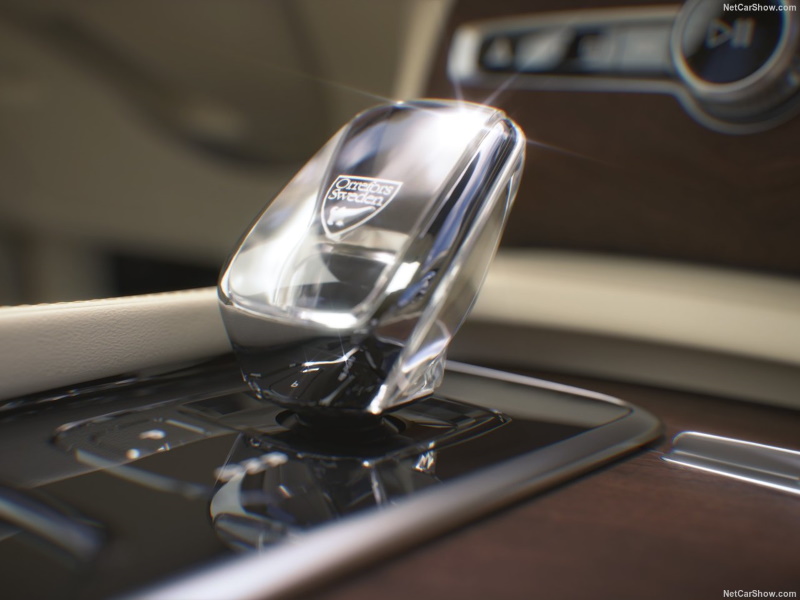 Kopers kan hulle nuwe XC90 met ‘n ses of sewe sitplek kajuituitleg bestel, waar die 6-sitplek my gunsteling is omdat dit twee sitplekke in drie rye plaas wat prakties en ruimtegewys die gevoel skep dat jy in die kajuit van ‘n luukse privaatstraler sit.
Kopers kan hulle nuwe XC90 met ‘n ses of sewe sitplek kajuituitleg bestel, waar die 6-sitplek my gunsteling is omdat dit twee sitplekke in drie rye plaas wat prakties en ruimtegewys die gevoel skep dat jy in die kajuit van ‘n luukse privaatstraler sit.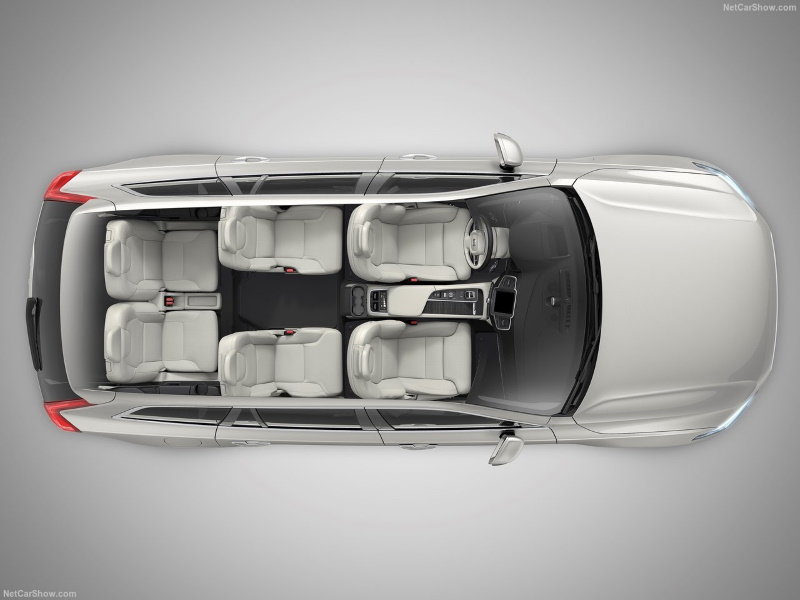 Soos met die eerste XC90 maak Volvo in die 2019 model ook gebruik van 2.0-liter 4 silinder enjins vir die hele reeks modelle. Tans het kopers die keuse tussen drie petrol weergawes en een turbodiesel, weliswaar met verskillende kraguitsette. Die petrol reeks begin met die T5 (187 kW/350 Nm, met ‘n amptelike petrolverbruik van 7.6L/100 km), ‘n T6 (235 kW/400 Nm en 8.0 L/100 km) en die topmodel T8 “Twin Engine plug-in hybrid” wat krag put uit ‘n kombinasie van turboaanjaer, superaanjaer en elektriese motors vir ‘n gekombineerde maksimum krag van 300 kW (235 kW + 65 kWe) en 640 Nm (400 Nm + 240 Nm).Die opgegradeerde D5 turbodiesel is my gunsteling model met heerlike lae toere wringkrag en goeie verrigting deur die toerestrek danksy 173 kW en 480 Nm wringkrag (teenoor die uitgaande model 165 kW en 470 Nm). Amptelike brandstofverbruik word aangegee as ‘n indrukwekkende 5.7 L/100 km. Aandrywing vir die al die modelle is na vier wiele deur ‘n seepgladde 8-spoed outomatiiese ratkas.
Soos met die eerste XC90 maak Volvo in die 2019 model ook gebruik van 2.0-liter 4 silinder enjins vir die hele reeks modelle. Tans het kopers die keuse tussen drie petrol weergawes en een turbodiesel, weliswaar met verskillende kraguitsette. Die petrol reeks begin met die T5 (187 kW/350 Nm, met ‘n amptelike petrolverbruik van 7.6L/100 km), ‘n T6 (235 kW/400 Nm en 8.0 L/100 km) en die topmodel T8 “Twin Engine plug-in hybrid” wat krag put uit ‘n kombinasie van turboaanjaer, superaanjaer en elektriese motors vir ‘n gekombineerde maksimum krag van 300 kW (235 kW + 65 kWe) en 640 Nm (400 Nm + 240 Nm).Die opgegradeerde D5 turbodiesel is my gunsteling model met heerlike lae toere wringkrag en goeie verrigting deur die toerestrek danksy 173 kW en 480 Nm wringkrag (teenoor die uitgaande model 165 kW en 470 Nm). Amptelike brandstofverbruik word aangegee as ‘n indrukwekkende 5.7 L/100 km. Aandrywing vir die al die modelle is na vier wiele deur ‘n seepgladde 8-spoed outomatiiese ratkas. Artikel deur Dirk Gallowitz in Ultimate Drive Ed.56.
Artikel deur Dirk Gallowitz in Ultimate Drive Ed.56.
Toyota Sports 800
 This Article by Robert Daniels first appeared in Ultimate Drive Ed.56. Photos: Wikipedia
This Article by Robert Daniels first appeared in Ultimate Drive Ed.56. Photos: Wikipedia
Die Storie voor Supra
Toe Robert Daniels se artikel oor die Toyota Sports 800 in ons inboks beland, was die nuuskierigheid oor die motor onmiddelik geprikkel. Met bietjie navorsing het ons nog veel meer ontdek as wat ons verwag het – wat ‘n lekker storie!
As dit by Toyota en sportmotors kom, staan een naam soos ‘n paal bo water. Supra. Maar lank voor die Supra selfs nog ‘n idee was, het die Toyota Sports 800 Toyota se naam in die motorsport wêreld op die kaart gesit. Hierdie was die Toyota wat die eerste Suzuka 500km ren in 1966 gewen het.
Alhoewel die Sport 800 minder krag as sy teenstaanders gehad het (slegs 70hp), was die kombinasie van aërodinamiese ontwerp, brandstof doeltreffendheid en ligte gewig ‘n wen formule. Teenstaanders soos die Skyline GT, Lotus Elan, Datsun Fairlady, en Honda S600 moes almal tydens die ren die kuipe besoek om brandstof aan te vul terwyl die klein Toyota Sport 800 die hele ren kon voltooi. Aan die einde van die resies was daar nog 30% brandstof oor.
Die klein David het verskeie Goliate verslaan!

Een van hierdie Sport 800 motors is onlangs in ‘n waenhuis ontdek. Die motor was is ‘n baie slegte toestand en verlate. Nadere ondersoek het egter gewys dat hierdie nie ‘n “Yotahachi”, of siviele weergawe van die Sport 800 was nie. Hierdie was motor Nr.7. Die spesifieke motor wat die Suzuka 500km ren gewen het!
Na dié ontdekking het Gazoo Racing onderneem om die spesiale motor te restoureer. Die motor was in ‘n baie slegte toestand en amper die helfte van die bakwerk moes herbou word. In die proses is dinge soos die hegpunte vir die vering versterk en die binneruim veral het spesiale aandag gedurende die restourasie proses geniet. Laastens is die motor uitgedos in Gazoo Racing kleure.
Die eind produk is die eerste renmotor van ouds, terug in die motorsport span van die hede. Lank lewe die Toyota Sport 800 – die Adam van Toyota Motorsport!


Artikel deur Johann van Tonder het verskyn in Ultimate Drive Ed.56. Fotos: Motorauthority.com

Karoo toe! Op ‘n SYM CROX 125
Avontuur motorfietse is al by die twee dekades die in ding as dit by motorfietse kom. Die bekoring van die grondpad, poorte, passe, avontuur wat wag! Mens kry dan ook twee soorte “avonturiers”. Jy kry die ploert wat op die bank sit en vertel hoe, as hy eendag die R300 000 motorfiets met padbystand, beste toerusting en klere het, hy fantastiese avonture gaan beleef. Hierdie avonture sal dan ook meer mal as anders net rusbank-drome bly. Dan kry jy die regte avonturiers, die manne wat nie wag tot hulle eendag als (en net van die beste) het voor hy moontlik sy avontuur aanpak nie, nee. Die ouens pak die avontuur aan, nou, met wat hy het.

 Christo Serfontein het so avonturiers-hart. En dis nie asof hy nie van beter weet nie. Christo is die voormalige eienaar van ‘n 800GS, asook ‘n 1200GS. Maar toe die pad weer begin roep en al wat in sy Mosselbaai se motorhuis staan is ‘n SYM CROX 125 met die bynaam “Tuffy”, was die toer aan.
Christo Serfontein het so avonturiers-hart. En dis nie asof hy nie van beter weet nie. Christo is die voormalige eienaar van ‘n 800GS, asook ‘n 1200GS. Maar toe die pad weer begin roep en al wat in sy Mosselbaai se motorhuis staan is ‘n SYM CROX 125 met die bynaam “Tuffy”, was die toer aan.

 Die SYM CROX herhinder nogal aan die Yamaha BWS. Dis so amper ‘n “crossover” skoeter met lekker vet bandjies, Hy is lig, maklik om te ry en boonop lekker ekonomies, so die begroting is nie so groot struikelblok tot avontuur soos met die groot fietse nie. Christo het die fiets gepak en gery. Karoo toe. Klein Karoo, Groot Karoo, Loxton verby. Draai gegooi deur die Moordenaars Karoo, nuwe vriende gemaak in Merweville en terug gekeer oor die asemrowende Swartberg pas. 4 dae en 1140km later, toe stop Christo weer by die huis, tevrede.
Die SYM CROX herhinder nogal aan die Yamaha BWS. Dis so amper ‘n “crossover” skoeter met lekker vet bandjies, Hy is lig, maklik om te ry en boonop lekker ekonomies, so die begroting is nie so groot struikelblok tot avontuur soos met die groot fietse nie. Christo het die fiets gepak en gery. Karoo toe. Klein Karoo, Groot Karoo, Loxton verby. Draai gegooi deur die Moordenaars Karoo, nuwe vriende gemaak in Merweville en terug gekeer oor die asemrowende Swartberg pas. 4 dae en 1140km later, toe stop Christo weer by die huis, tevrede.

 Volgens Christo het die SYM CROX die pad besonder goed gehanteer. Jy pas net jou ry-styl en spoed aan by die fiets en die toestande. En omdat jy rustiger ry, is jy nie haastig nie, rus beter en sien meer. Ook, omdat die fiets so lig is (112kg) en die op- en afklim so maklik, stop jy makliker om die omgewing te verken of om ‘n foto te neem. Dis nie ‘n geklouter en gesukkel met ‘n swaar fiets nie.
Volgens Christo het die SYM CROX die pad besonder goed gehanteer. Jy pas net jou ry-styl en spoed aan by die fiets en die toestande. En omdat jy rustiger ry, is jy nie haastig nie, rus beter en sien meer. Ook, omdat die fiets so lig is (112kg) en die op- en afklim so maklik, stop jy makliker om die omgewing te verken of om ‘n foto te neem. Dis nie ‘n geklouter en gesukkel met ‘n swaar fiets nie.

 Die SYM draf gemiddeld so 80km/h op ‘n goeie grondpad en anderkant 100km/h op teer, maar dit was nie die punt nie. Hierdie was ‘n reis. Die enigste nadele wat Christo ondervind het was die klein brandstof tenk van 5L, maar dan het die SYM met 140kg (bagasie en ryer) op sy rug steeds 25km/L gekry. Dus het die 5L wat Christo ekstra saam gery het gesorg vir ‘n totale reikafstand van by die 250km. Die ander probleem was dat Christo elke keer die bagasie moes aflaai om by die tenk onder die sitplek uit te kom, maar dan, hoeveel bagasie kan daar nou op ‘n soeter wees?
Die SYM draf gemiddeld so 80km/h op ‘n goeie grondpad en anderkant 100km/h op teer, maar dit was nie die punt nie. Hierdie was ‘n reis. Die enigste nadele wat Christo ondervind het was die klein brandstof tenk van 5L, maar dan het die SYM met 140kg (bagasie en ryer) op sy rug steeds 25km/L gekry. Dus het die 5L wat Christo ekstra saam gery het gesorg vir ‘n totale reikafstand van by die 250km. Die ander probleem was dat Christo elke keer die bagasie moes aflaai om by die tenk onder die sitplek uit te kom, maar dan, hoeveel bagasie kan daar nou op ‘n soeter wees?

Omstanders se reaksie tot ‘n reisiger op ‘n skoeter is een van verbasing, maar altyd vriendelik, vol vrae en die ontvangs sonder uitsondering positief. Christo se ervaring op die skoeter was een van vryheid en die belangstelling in sy avontuur het alle reise op “gewone” motorfietse totaal oortref.
Met ‘n skoeter wat R17 995 “uit die boks” kos en slegs 25km/L verbruik, het niemand meer verskoning dat ‘n avontuur ‘n motorfiets van R300 000 verg nie. Hierdie “Tuffy” gaan dit nog oor en oor bewys.
Gee my spoed, Sakkie!
Die veelsydige SYM CROX 125 is nie net ‘n ideale pendel fiets of klein avontuur fiets met ‘n groot hart nie, nee. Thundercycles in George het ook ander groot planne vir die CROX. Charl Joubert het ‘n SYM Crox van die vloer gehaal en na die werkswinkel geneem. In ‘n projek wat herhinder aan die ou skooldae toe ons nog ons 50cc motorfietse “warm” gemaak het, kry hierdie skoeter ‘n ander uitlaat en daar word gepeuter met die lugfilter en vergasser, want sien, hierdie SYM CROX word voorberei vir skoeter resies! Hier is ‘n nuwe ding wat kop uit steek in George. In ‘n volgende uitgawe vertel ons meer!
SYM? Wie?
SYM staan vir Sanyang Motor Co., Ltd. Die maatskappy is reeds in 1954 in Taiwan gestig en vervaardig motorfietse, skoeters en vierwielers onder die SYM naam, terwyl hy motors bou vir Hyundai en ander voertuie vir Bombardier, Mahindra en International Trucks. SYM het al meer as 16 miljoen motorfietse en 800 000 motors gebou. SYM se uitset tans is 600 000 motorfietse en 20 000 motors per jaar, met ‘n omset van meer as ‘n Miljard Dollar.
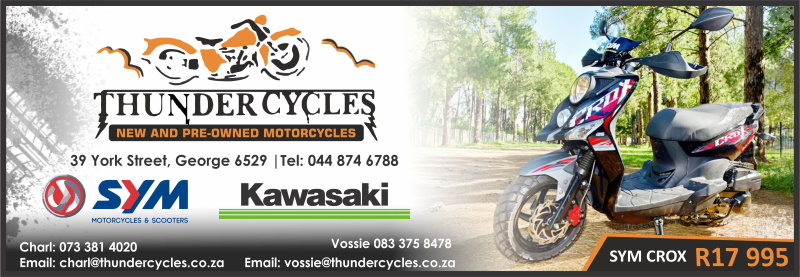
Artikel: Johann van Tonder; Fotos: Christo Serfontein





